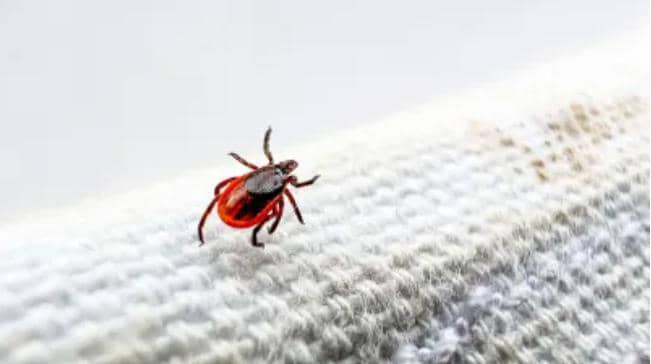News
Climate crisis fuels surge in lyme disease as ticks expand
DDM News

Health authorities across North America are raising concerns about a worrying rise in tick-borne illnesses linked to climate change.
Diaspora Digital Media (DDM) gathered that emergency room visits for tick bites in 2025 have reached their highest point since 2017, according to data from the US Centers for Disease Control and Prevention (CDC).
The uptick in cases is being tied directly to warmer and more humid weather conditions, which allow ticks to thrive in areas previously unsuitable for their survival.
Scientists say that rising global temperatures are pushing ticks further north and into suburban and urban areas where residents may not be familiar with the risks.
Dr. Thomas Daniels, a tick expert and director of Fordham University’s Louis Calder Center, noted that Lyme disease was almost non-existent in Canada in the 1980s.
Now, he says, it is firmly established in many Canadian regions, indicating how far the disease has spread due to environmental changes.
Lyme disease is primarily spread by deer ticks, also known as black-legged ticks, which become active when temperatures exceed 45 degrees Fahrenheit.
According to the US Environmental Protection Agency, these ticks prefer environments with at least 85% humidity, such as shady wooded areas with rich ground cover.
Dr. Daniels explained that ticks are unlikely to be found on dry, sun-exposed lawns but are common just a short distance into moist forested zones.
The threat of tick bites is part of a broader pattern of climate-sensitive diseases on the rise.
Mosquito-borne illnesses such as malaria, dengue, and West Nile virus are also increasing in prevalence in North America.
Dr. Erin Mordecai, a Stanford University biologist, warned at a recent news briefing that climate change has already made conditions more favorable for disease transmission.
Lyme disease is caused by the bacterium Borrelia burgdorferi, transmitted through the saliva of infected deer ticks during feeding.
Ticks are most infectious during their nymph stage, when they are about the size of a poppy seed and difficult to detect.
Once attached, they can take 24 to 48 hours to transmit the Lyme-causing bacteria into the host’s bloodstream.
Experts emphasize that early removal of the tick is crucial to prevent infection.
Dr. Daniels stressed that while preventive steps like insect repellents and protective clothing can reduce the risk, they are not foolproof.
The fastest and most effective protection remains physically removing the tick as soon as it is noticed.
He also noted that Powassan virus, another tick-borne illness, can be transmitted in as little as 15 minutes, though such cases remain rare.
In light of these growing threats, health officials are urging the public to stay alert, especially when spending time outdoors in grassy or wooded areas.
The CDC recommends checking for ticks after outdoor activity, wearing long sleeves and pants, and using EPA-registered repellents.
As the climate crisis deepens, experts warn that Lyme disease and other vector-borne illnesses will become increasingly common across the United States and Canada.
Public health systems are now being challenged to adapt faster than the insects they aim to track and contain.
🚨 Follow DDM WhatsApp channel Now!
Get breaking news, hot gist, and updates FIRST!
*📲 Click to join 👇* https://whatsapp.com/channel/0029Vajkwdc4dTnFHl19vW3g
*Apply at the link below and Start Your Tech Joney.
https://www.ddm.media/cohort-6
For Diaspora Digital Media Updates click on Whatsapp, or Telegram. For eyewitness accounts/ reports/ articles, write to: citizenreports@diasporadigitalmedia.com. Follow us on X (Fomerly Twitter) or Facebook












